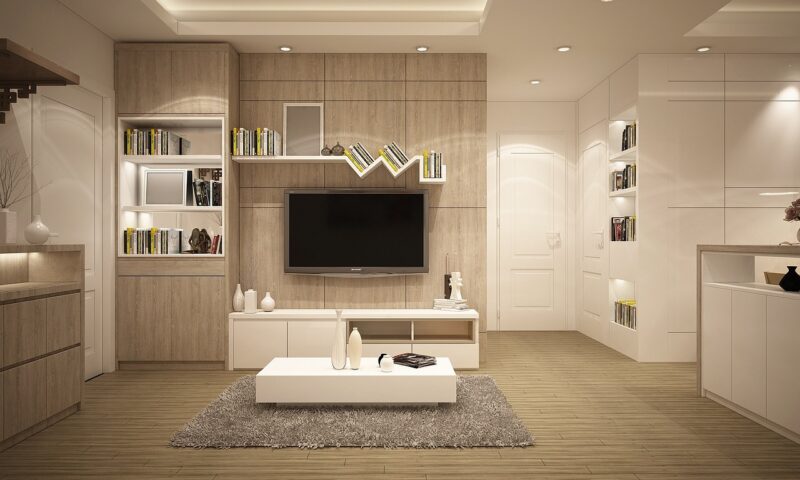Creating a Home Sanctuary: How to Design a Space that Fosters Peace and Productivity
November 11, 2024

In today’s fast-paced world, our homes should be more than just places to eat and sleep. They can be sanctuaries that nurture our minds, creativity, and emotional well-being. A well-designed home sanctuary not only encourages relaxation, but it also enhances productivity and peace. In this article, we delve into practical strategies and tips for creating a space that embodies tranquility and efficiency, making the most of your home environment.
1. Understanding the Concept of a Home Sanctuary
A home sanctuary is defined as a personal space that provides comfort, security, and a sense of calm amidst the chaos of everyday life. Numerous studies have shown that the environment we inhabit significantly impacts our mood, mental clarity, and emotional health. Here are some core elements to consider when creating a home sanctuary:
- Comfort: A sanctuary should be cozy and welcoming, encouraging you to relax and unwind after a long day.
- Personal Touch: Infuse the space with elements that represent who you are—art, plants, colors—these should resonate with your personal identity and values.
- Functionality: Ensure the space caters to your needs, whether that be a tranquil reading nook or a focused workspace. Combining comfort and functionality leads to enhanced productivity and peace of mind.
Understanding these elements allows you to design a sanctuary tailored to foster your unique lifestyle and needs.
2. Choosing the Right Location
The location of your sanctuary plays a vital role in its overall effectiveness. Natural light, quiet surroundings, and peaceful views enhance the space’s tranquility.
– Select a Room: Choose a dedicated room for your sanctuary, such as a spare bedroom, home office, or garden room. If separate spaces are not an option, design corner spaces in shared areas to carve out time for self-care.
– Natural Light: Prioritize areas with ample natural light, as daylight can enhance mood and productivity, reducing eye strain and stimulating creativity.
– Quiet Zones: Locate your sanctuary away from bustling areas of the home, such as the kitchen or living room. Focus on locations that minimize distractions to promote relaxation and deep focus.
3. Color Psychology: The Impact of Colors on Mood
Color influences our emotions significantly. When designing your home sanctuary, consider how colors evoke certain feelings and moods:
- Cool Colors (Blue, Green): These colors create a sense of calm and relaxation. Blue can help lower stress levels, while green symbolizes nature and promotes balance.
- Warm Colors (Yellow, Orange): These colors evoke warmth and energy but should be used with caution. Incorporate them in accessories or accents to stimulate creativity without overwhelming the space.
- Neutral Colors (Grey, Beige): Neutrals create a minimalist, clean background that can enhance focus and allow decorative elements to shine. They also make the space versatile for future changes.
Choose a color palette that highlights the space’s primary function whilst fostering a sense of peace and productivity.
4. Incorporating Natural Elements
Integrating nature into your sanctuary has scientifically proven benefits in enhancing mood and reducing stress. Here’s how to bring the outside in:
- Indoor Plants: Incorporate air-purifying plants like snake plants, pothos, or peace lilies. Studies show that houseplants improve air quality and boost overall wellness.
- Natural Materials: Use materials like wood, stone, or bamboo for furnishings and decorations. Natural textures add warmth and a tactile quality to your sanctuary.
- Natural Light and Views: Enhance your space by maximizing natural light and views of the outdoors. Consider larger windows or mirrors to reflect light and create a sense of openness.
Natural elements make our surroundings feel grounded and connected to something larger, promoting serenity.
5. Comfort and Furnishings: The Right Choices
Comfortable furnishings are pivotal in achieving a conducive atmosphere. Here are some principles to consider when selecting items for your sanctuary:
- Ergonomics: Choose furniture designed for comfort and support, especially if you’ll spend considerable time in this space. An ergonomic chair or a soft recliner can enhance relaxation and productivity.
- Textures: Incorporate a variety of textures through textiles such as cushions, rugs, and throws. This adds visual interest while also creating cosiness. Consider breathable fabrics like cotton or linen for optimal comfort.
- Personal Items: Surround yourself with items that bring you joy and serenity, such as artwork, books, or photographs. These personal touches make the space uniquely yours and foster a sense of belonging.
Incorporate pieces that speak to you, creating a personalized, inviting atmosphere.
6. Lighting for Serenity and Productivity
Lighting plays a crucial role in how we experience space. The right lighting can evoke various moods and enhance both relaxation and productivity:
- Natural Light: As previously mentioned, prioritize natural light. If possible, arrange furniture to maximize daylight and minimize shadows.
- Layered Lighting: Combine different types of lighting such as ambient lights, task lights, and accent lights. Dimmers can help control brightness for various activities, from meditative practices to focused work sessions.
- Warm Light Bulbs: Opt for warm tone lighting to create a cozy atmosphere. Avoid harsh fluorescent lights that can feel clinical and draining.
Create a balanced lighting design that nurtures both mental clarity and relaxation.
7. Establishing Your Daily Rituals
Once you’ve created your home sanctuary, it’s essential to establish daily rituals that foster a sense of peace and productivity:
- Mindfulness Practices: Incorporate meditation, yoga, or quiet reading time in your daily routine within your sanctuary space. Mindfulness practices can significantly reduce stress and anxiety levels.
- Scheduled Breaks: Take regular breaks to recharge your mind and body, especially if you work from home. Stepping away from work helps maintain focus and boosts productivity when you return to tasks.
- Creative Outlets: Use your sanctuary as a space for creativity—now is the time to paint, write, craft, or explore any hobbies that spark joy and relax the mind.
These rituals can help solidify your sanctuary as a space of solace and productivity in your daily life.
Conclusion: Your Sanctuary Awaits
Creating a home sanctuary is a personal and rewarding endeavor. By thoughtfully designing your space with elements that evoke peace and support productivity, you can transform your home into a nurturing retreat. Remember that this is your sanctuary, and there are no strict rules—let your personality shine through and tailor the space to your needs.
Your home sanctuary is not just a physical space; it’s a haven for your mind and spirit. Start today, and take the first step towards creating a home environment that inspires, calms, and revitalizes you.








